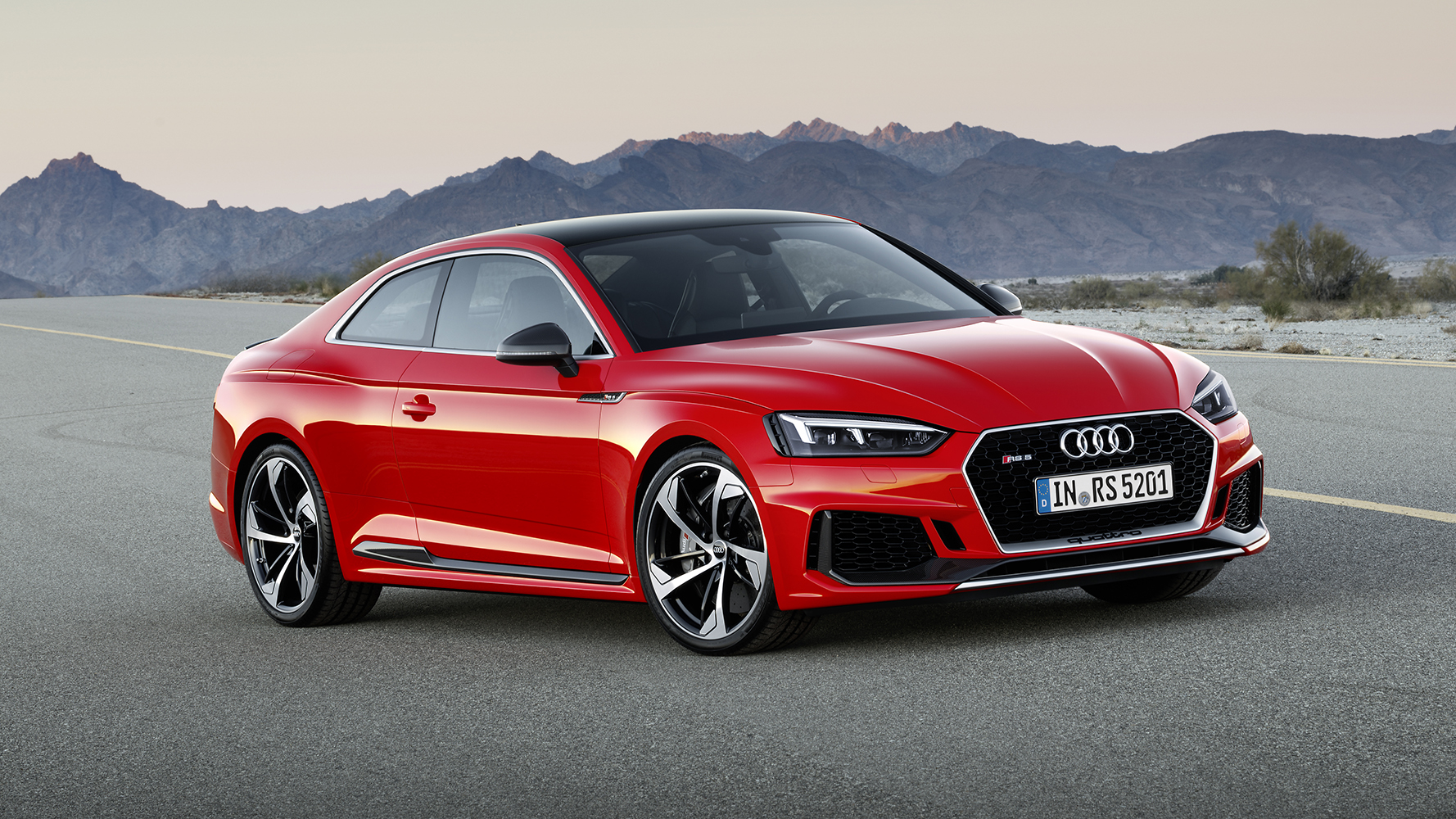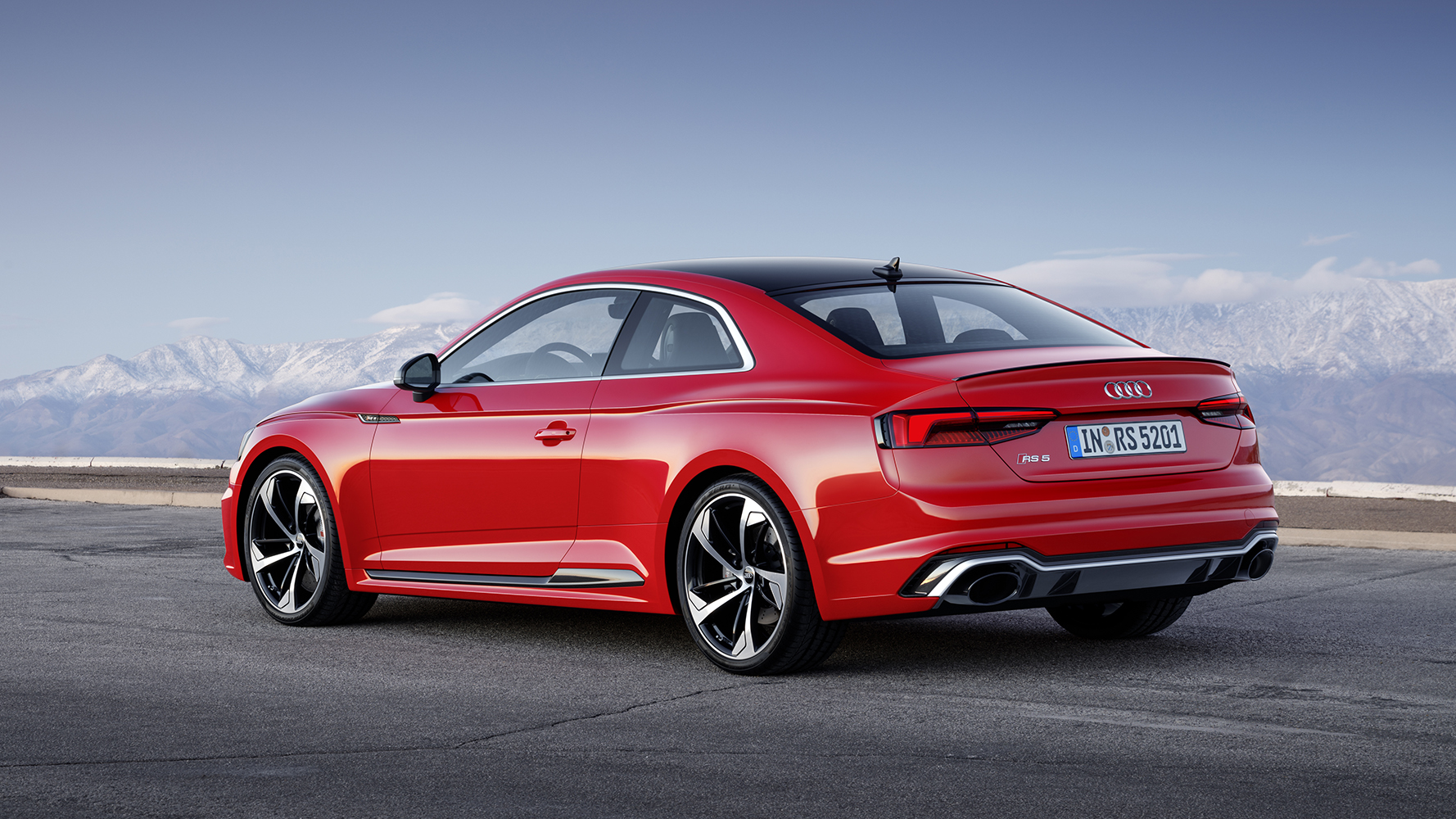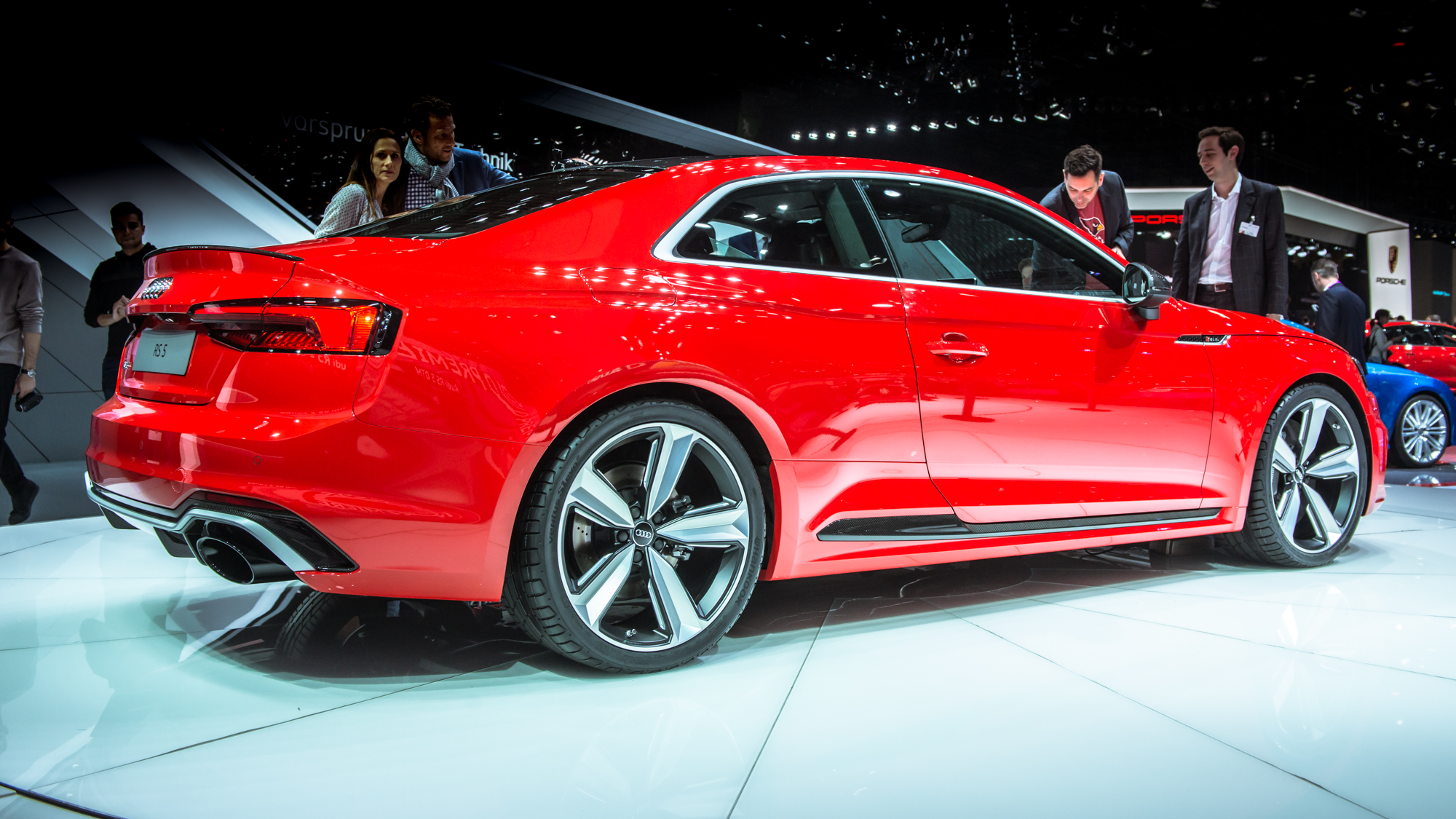
The Audi RS5 now has a 2.9-litre biturbo V6
New Audi RS5 goes on an efficiency drive
It’s been a long time between drinks for the Audi RS5, but no longer: we can confirm that this is the brand-new model. What do you think?
Audi says the design is reminiscent of the 90 Quattro IMSA-GTO racer, which we think is a fantastic place to start. For those of you who don’t remember the IMSA-GTO’s looks, we’ve included a happy snap. You can thank us later.
The last RS5 was introduced about five years ago, coincidentally at the Geneva Motor Show. Back then, it used a 4.2-litre V8 with 444bhp, which was lovely.
The new breed, on the other hand, follows the modern conceit of smaller, lighter and turbocharged with what appears to be great success. Specifically, the new formula results in a 2.9-litre V6, with a pair of turbochargers, pumping out 450bhp. Now, if that doesn’t seem like much of an improvement over the last one, you might be on to something.
But, like so much in life, the figures don’t tell the whole story. For instance, the peak torque of 442lb ft, is up 125 on the old model’s 317. Technically, Audi says the new RS5 has 442 and a half lb ft, which definitely doesn’t make them sound like nerds or anything.
And then, of course, there’s how that peak torque figure is delivered – from 1900rpm to 5000rpm. As you might agree, that’s a fairly wide spread, and means that progress should be pretty rapid – 0-62mph in 3.9 seconds and 174mph rapid, to be precise.
But then, rapidity was never the old model’s problem. It was, in our minds at least, too heavy, too taxing and nowhere near involving enough to be worthy of the RS badge. And there’s some very good news on that front – the new model is 60kg lighter than the old one, thanks to two fewer cylinders. There’s an optional carbon-fibre roof on offer as well, which should shave up to 10kg. In essence, we would recommend ticking any option that makes the new RS5 lighter because, at 1655kg, it’s still more of a prop than a winger, if you catch our drift.
In more good news, five-link rear suspension replaces the old dual wishbone setup of the old RS5, which means the springs don’t have to be as stiff to keep the wheels where they’re supposed to be. This means a more compliant, comfortable ride, while giving nothing away in terms of agility. It’s also something that BMW has had on its A5-sized coupes since the E46. Pin, meet balloon. But we digress.
In bad news, it seems that an eight-speed automatic is your only option. So, if you are the kind who enjoys the old-school gated shift and loves Audis, we suggest tracking down a second-hand version of the original R8.
Anyway, regardless of gearbox quandaries, the RS5 sends 60 per cent of the 442.5 lb ft of torque to the rear axle as standard, offsetting the tendency to understeer that 50:50 setups tend to have. And, if you want to know how that feels, try powersliding a Range Rover Sport. Just not on the street.
Top Gear
Newsletter
Thank you for subscribing to our newsletter. Look out for your regular round-up of news, reviews and offers in your inbox.
Get all the latest news, reviews and exclusives, direct to your inbox.
Despite the many faults of the old RS5, we would have to admit that it was almost perfectly sized. The new one, on the other hand, is nearly three inches longer, but we’ll have to hold fire on that development until we get to grips with its effect in the real world.
On the other hand, we can assume that the carbon ceramic brakes will be very strong, the adjustable dampers will vary the ride from quite firm to torturous and the ‘dynamic steering’ assistance will be annoying and intrusive. Just how accurate we are will have to be borne out when we test drive it later in the year.
Trending this week
- Car Review
BMW 1 Series










